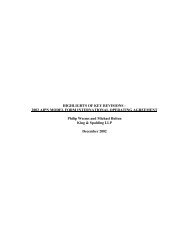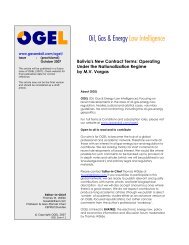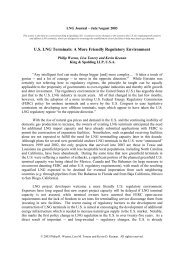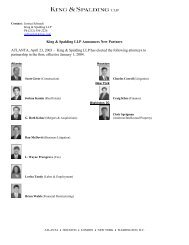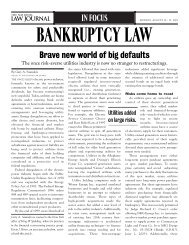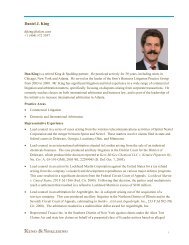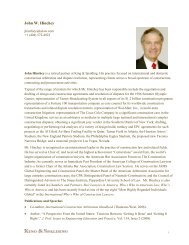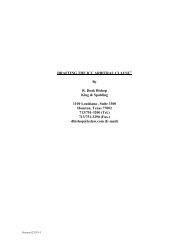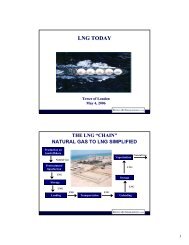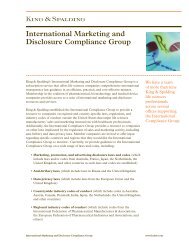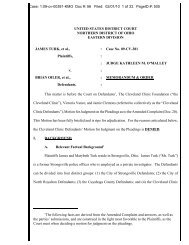Due Diligence Review: M&A Behind the Scenes - King & Spalding
Due Diligence Review: M&A Behind the Scenes - King & Spalding
Due Diligence Review: M&A Behind the Scenes - King & Spalding
Create successful ePaper yourself
Turn your PDF publications into a flip-book with our unique Google optimized e-Paper software.
OVERVIEW<br />
MEASURING<br />
RISK TO<br />
MINIMISE<br />
DISASTERS<br />
In today’s often-troubled mergers and<br />
acquisitions market, lack of return<br />
and <strong>the</strong> shareholder backlash against<br />
outright failure has prompted <strong>the</strong><br />
need for more proficient identification<br />
of <strong>the</strong> benefits and <strong>the</strong> risks involved.<br />
BY MARK WILLIAMS<br />
If you had <strong>the</strong> opportunity to race a Formula One car with<br />
over 900bhp capable of more than 220mph, you would probably<br />
want <strong>the</strong> best technical crew checking every aspect of<br />
<strong>the</strong> car, <strong>the</strong> wea<strong>the</strong>r conditions and <strong>the</strong> track before you got<br />
behind <strong>the</strong> wheel. You would want <strong>the</strong> experts to do everything<br />
possible not only to maximise <strong>the</strong> performance of <strong>the</strong> vehicle, but<br />
also to reduce <strong>the</strong> dangers involved.<br />
To stretch an analogy to its limits, executives face substantial<br />
risks when looking to buy a company. After all, if a mistake is<br />
made, angry shareholders are only slightly less dangerous than a<br />
concrete wall. M&A risks are undoubtedly greater today than<br />
<strong>the</strong>y were 10 years ago, and before proceeding with a strategic<br />
purchase, acquirers are learning to surround <strong>the</strong>mselves with a<br />
comprehensive team of advisers to evaluate how a potential target<br />
might be made to perform, or whe<strong>the</strong>r it is safer to walk<br />
away.<br />
4 FW <strong>Due</strong> <strong>Diligence</strong> <strong>Review</strong>: M&A <strong>Behind</strong> <strong>the</strong> <strong>Scenes</strong> 2004 | www.financierworldwide.com<br />
More likely to fail<br />
It is difficult to pin down exactly how many acquisitions dissatisfy<br />
<strong>the</strong> companies involved, but consensus strongly suggests that a<br />
negative outcome can be expected more than half of <strong>the</strong> time.<br />
Acquisitions are considered failures for all sorts of reasons. It<br />
can come down to an inability of <strong>the</strong> companies to integrate, <strong>the</strong><br />
fact that too much was paid or <strong>the</strong> wrong company was bought.<br />
Some executives admit to ignoring <strong>the</strong> potential challenges of a<br />
merger, to being blinded by <strong>the</strong> excitement of a bid or to losing<br />
focus on running <strong>the</strong> core business. O<strong>the</strong>rs blame ineffective due<br />
diligence findings, <strong>the</strong> seller dressing up <strong>the</strong> target, or fundamental<br />
changes occuring in <strong>the</strong> market place which adversely<br />
impact <strong>the</strong> business.<br />
The consistent failure of companies to justify <strong>the</strong> expense of an<br />
acquisition means that shareholders are now watching deals more



